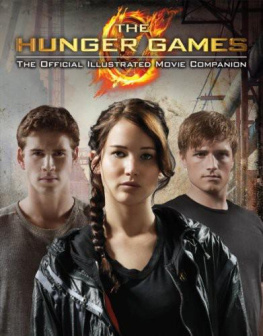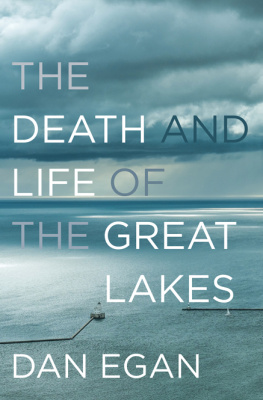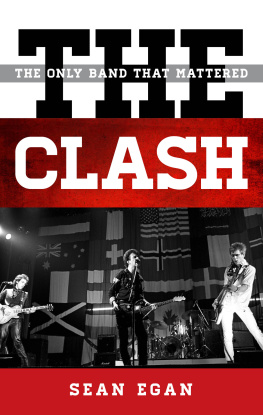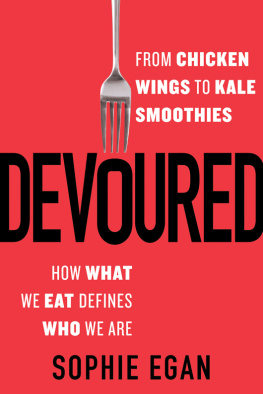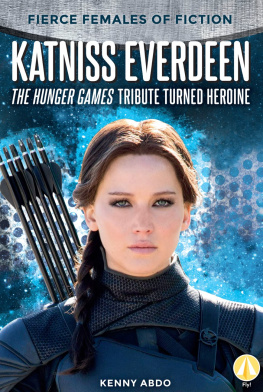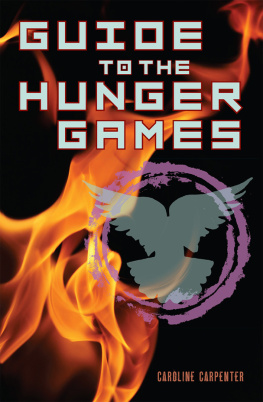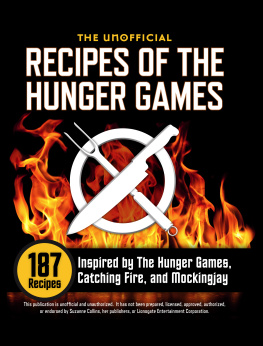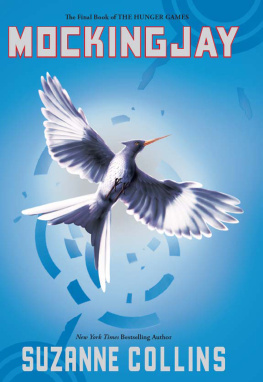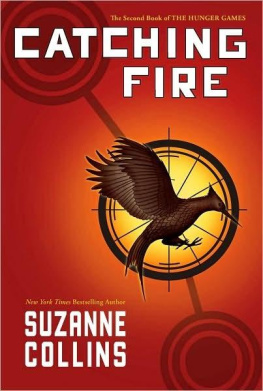
Contents



Katniss Everdeen (Jennifer Lawrence) stands in the crowd during the District 12 reaping.
A n extraordinary girl is trapped inside a game of life and death. With no special training, no magic powers, she finds a way to survive just like she always has. But now the world is watching, and shes playing with forces bigger than she knows. Where some find inspiration, others see rebellion. And so the girl discovers: In these games, nobody really wins.
With its twisting plot and constant suspense, Suzanne Collinss novel The Hunger Games is impossible to put down. It keeps you reading, breathless, until the final page. Youre not alone if you stayed up half the night to finish it, racing toward the end.
But its not just the storytelling that hooks you. Its that the central character, sixteen-year-old Katniss Everdeen, is at once so brave and so real. What carries her through the grueling challenges of the arena? Whats her one goal, in this perverse place where violence leads to victory and love leads to defeat? Shes not after wealth or fame she just wants to get back home.
Katniss has a focus, a raw power, that ordinary people can only dream of. And yet, like us, shes not entirely in control of her own destiny. In our difficult times, Katniss is a heroine we can understand.
The Hunger Games and its sequels, Catching Fire and Mockingjay, have been on the top of bestseller lists for the last three years and counting. In the United States alone, there are sixteen million copies of these books in print. Theyve lured in readers young and old, become the basis for countless articles and fan sites, and inspired other artists. Now, for the first time, fans of the series will see The Hunger Games brought to life on film.

Its a major motion picture in every sense of the word: major talent, major effort, major interest. This book will take you behind the scenes, from script to screen, casting to costumes, training to trees. Lots and lots of trees.
First, though, to the books beginnings, the soul of the film...
I t all started when author Suzanne Collins was up way too late one night, sitting on her couch and watching TV. She was flipping channels, switching between a reality show and news coverage of the Iraq war, when suddenly the images began to blur in her mind.
On one channel, young people were testing their limits and going to extremes to entertain an audience. On another channel, young people were fighting for their country and risking their lives.
An idea began to form.
What if a group of kids was required to fight and risk their lives as entertainment? Who would be watching? What would this show look like? Could anybody win these games? And what would happen if they did? Suzanne Collins was in the middle of writing a different book, but these questions lingered in her imagination.
It had been five years since Collins had followed a friends advice and tried her hand at writing a childrens book. Her first novel, Gregor the Overlander, was about an eleven-year-old boy who falls through a grate in the laundry room of his apartment building. Suddenly he finds himself in a strange world populated by giant cockroaches, spiders, bats, and rats all the creatures you might expect to find beneath New York City. These species have coexisted uneasily for years, but their world is on the brink of war. Gregor cant wait to get out, until he discovers that his presence in this world, the Underland, has been foretold in a prophecy, and sticking around might just help him find his missing father. He embarks on a quest that will change both him and this strange land forever.

Suzannes first novel, Gregor the Overlander. Above: Author Suzanne Collins.
In 2003, Gregor the Overlander was published to wide acclaim, making Suzanne Collins an author to watch. Soon her publisher, Scholastic, signed up the next books in what she had always envisioned as a five-part series. By the time the third, Gregor and the Curse of the Warmbloods, was published, the series had found a loyal following of readers. The series finale, Gregor and the Code of Claw, was a New York Times bestseller. With a hungry audience and a growing reputation for fast-paced, thought-provoking stories, Collins was poised to take her next step as a writer.
Most of her career had been spent in childrens television, writing shows for Nickelodeon and PBS, like Clarissa Explains It All, Oswald, Little Bear, and Cliffords Puppy Days. Collins loved writing for young children, and several of her shows had been nominated for Emmy Awards, but shed long been fascinated by subjects more suitable for older kids.
In The Underland Chronicles (as the Gregor books came to be known), Collins had created a complex society that exploded into war. Her readers were mostly in middle school, but she had written genocide and biological weapons into these books. She had killed off beloved characters to explore the cost and the emotional fallout of war. Still, she had more to say about when and how or whether war could be justified. In a young adult novel, she might delve more deeply into the subject. While waiting for editorial comments on her final Gregor book, Collins wrote a short proposal for a young adult trilogy called The Hunger Games.
Collins found inspiration in several places beyond her TV set. First, in her childhood love of Greek mythology, particularly the story of Theseus and the Minotaur. As part of the surrender terms of a war, King Minos of Crete required that the city of Athens send tribute to him in the form of seven youths and seven maidens. These tributes went into a labyrinth to face the Minotaur half man and half monster who would then destroy them all. This savagery continued until the Athenian prince, Theseus, went as tribute to Crete, and killed the Minotaur instead.

As a child, Suzanne Collins was struck by the cruelty of the Cretan king, and it stayed in the back of her mind as she began to construct the country of Panem, the setting for The Hunger Games. Like King Minos, Panems cold and calculating President Snow sends a clear message to his people. As Collins puts it: Mess with us and well do something worse than kill you. Well kill your children.
One of Collinss favorite movies is the classic Spartacus, based on the true story of a Roman slave. While being trained in a gladiator school, Spartacus and his mates overthrew their guards and escaped to freedom. Led by Spartacus, they were joined by other slaves, and the rebellion built to the Third Servile War with the Roman Empire. Like Katniss, Spartacus followed a path from slave to gladiator, from gladiator to rebel, and from rebel to the face of a war.
Next page
